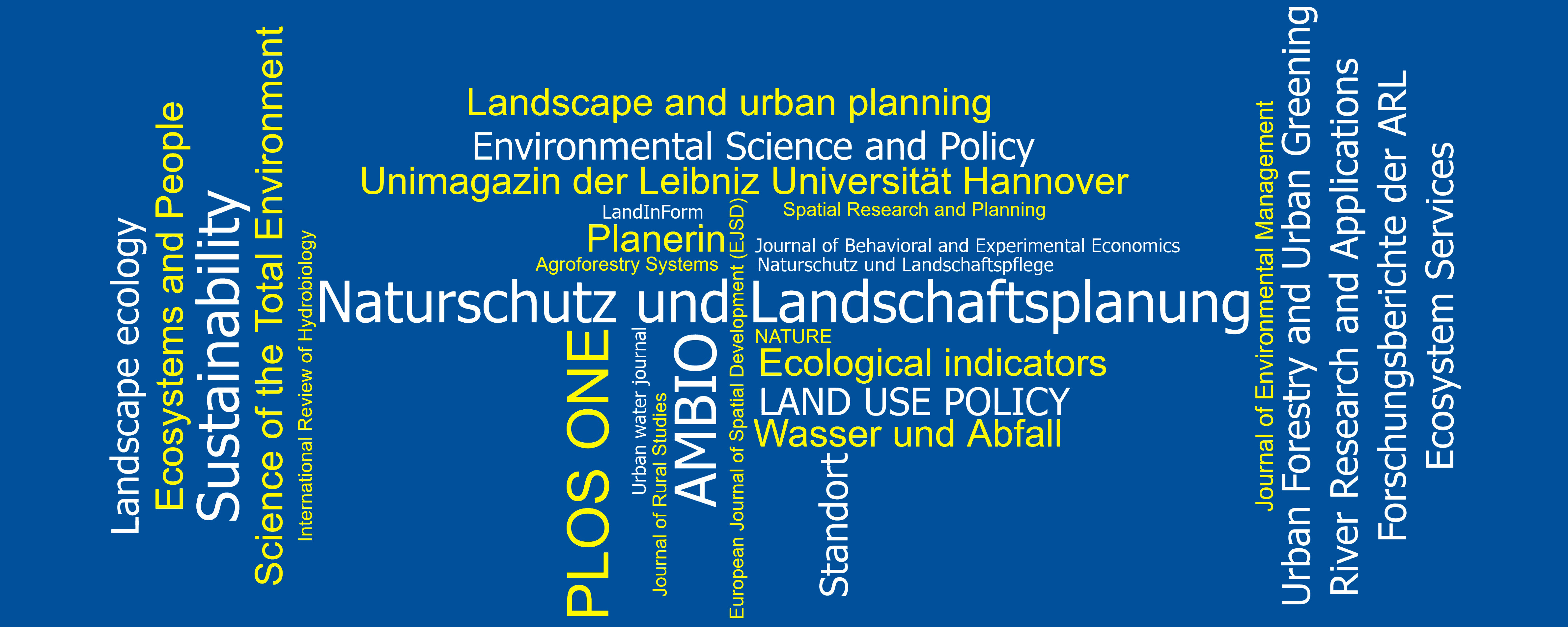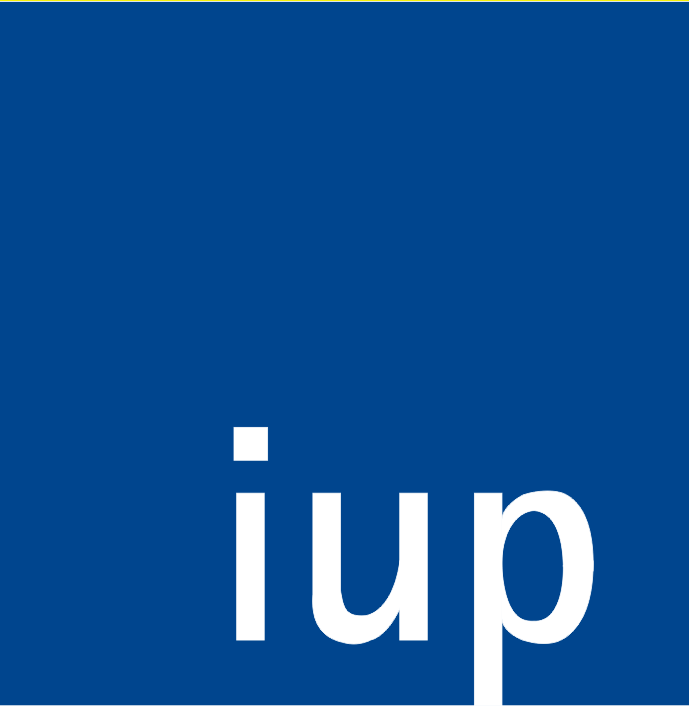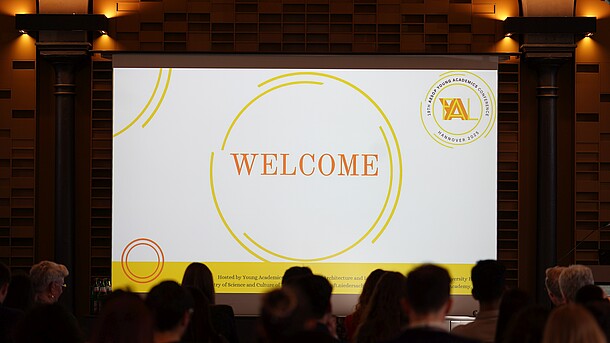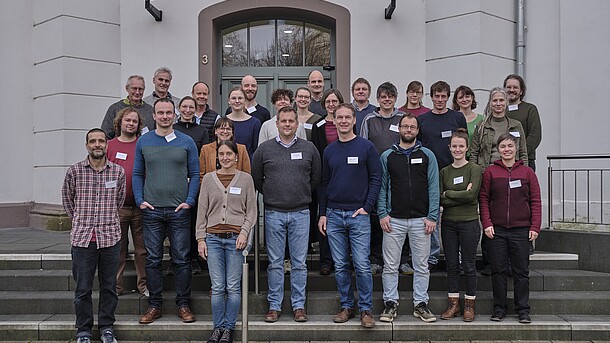Looking back at an eventful and inspiring AESOP YA Conference 2025



SEARCH FOR PUBLICATIONS
Showing results 701 - 720 out of 1587
2016
Galler, C., & Levin-Keitel, M. (2016). Innerstädtische Flusslandschaften als integriertes Handlungsfeld. Raumforschung und Raumordnung, 74(1), 23-38. https://doi.org/10.1007/s13147-015-0374-3
Galler, C. (2016). Multifunktionalität von Umweltmaßnahmen – Quantifizierung multipler Umweltwirkungen und ihre Berücksichtigung in der Umweltplanung. [Doctoral thesis, Leibniz University Hannover]. https://doi.org/10.15488/8679
Graf, M. D., & Rochefort, L. (2016). A conceptual framework for ecosystem restoration applied to industrial peatlands. In A. Bonn, T. Allott, M. Evans, H. Joosten, & R. Stoneman (Eds.), Peatland Restoration and Ecosystem Services: Science, Policy and Practice (pp. 192-212). Cambridge University Press. https://doi.org/10.1017/cbo9781139177788.012
Greinke, L. (2016). Bürgerbeteiligung ohne Dialog? Vielfalt der Kommunikation im Stadtentwicklungsprozess "Mein Hannover 2030". . RaumPlanung – Fachzeitschrift für räumliche Planung und Forschung, 2016(187), 42-49.
Greinke, L. (2016). BürgerInnenbeteiligung ohne Dialog? Evaluation von Partizipationsverfahren am Beispiel des Stadtentwicklungsprozesses "Mein Hannover 2030". https://www.hannover.de/Leben-in-der-Region-Hannover/Politik/B%C3%BCrgerbeteiligung-Engagement/Mein-Hannover-2030/Die-Ergebnisse/Ergebnisse-der-Begleitforschung
Greinke, L., & Finger, A. (2016). "Mein Hannover 2030". In Hochweit 2016 (pp. 150-151). (Hochweit : Jahrbuch der Fakultät für Architektur und Landschaft).
Günther, H., Wolf, S. K., & Hacker, E. (2016). A process – oriented approach for the development of lakeshore habitats. International Congress EFIB / AEIP Soil and Water Bioengineering, San Sebastian, Spain..
Günther, H., von Birgelen, A., & Kühn, N. (2016). Potenziale von Stauden in der Vertikalbegrünung. Stadt und Grün, 65(3), 43-48.
Günther, H. (2016). Vertikalbegrünungen als Element grüner Infrastrukturen in Städten. fbr-Wasserspiegel, 21(1), 18.
Hauck, J., Albert, C., Fürst, C., Geneletti, D., La Rosa, D., Lorz, C., & Spyra, M. (2016). Developing and applying ecosystem service indicators in decisionsupport at various scales. Ecological Indicators, 61(1), 1-5. https://doi.org/10.1016/j.ecolind.2015.09.037
Hellmich, M., & Lange, L. (2016). Bridging research and practice through collaboration: lessons from a joint working group. Planning Theory and Practice, 17(3), 457-459. https://doi.org/10.1080/14649357.2016.1190491
Herrmann, S., Kempa, D., & Osinski, E. (2016). Transdisziplinäre Antworten auf globale Fragen. Nachrichten der ARL, 46(2), 18-22.
Hirche, S. (2016). Ein Sternenpark im Harz als Beitrag zum Schutz des natürlichen Nachthimmels. In Hochweit 2016: Jahrbuch der Fakultät für Architektur und Landschaft (pp. 148-149). (Hochweit : Jahrbuch der Fakultät für Architektur und Landschaft).
Hofmeister, S., Kanning, H., & Mölders, T. (2016). Gendered Energy – Analytische Perspektiven und Potenziale der Geschlechterforschung für eine sozial-ökologische Gestaltung der 'Energiewende' im Raum. Raumforschung und Raumordnung, 74(3), 213-227. https://doi.org/10.1007/s13147-016-0392-9
Kanning, H., & Richter-Harm, B. (2016). Klimaangepasste, nachhaltige Quartiersentwicklung– Hannover. Planerin, 5(16), 21-23.
Kanning, H., Kurz, R., Pape, J., & Twarok, J. (2016). Zivilgesellschaftliche Impulse für das Hochschulsystem: Zur Rolle der Hochschulräte. Die neue Hochschule (DNH), 6(16), 182-185.
Kempa, D. (2016). Regiobranding - Ein transdisziplinärer Blick auf regionale Kulturlandschaften. In DGGL (Ed.), Landschaftskultur – Zwischen Bewahrung und Entwicklung: DGGL-Themenbuch 11: Landschaftskultur (Vol. 11, pp. 50-54). Verlag Georg D. W. Callwey Gmbh & Co. KG, 2016.
Kirsch-Stracke, R. (2016). Die Sauparkmauer in Springe bei Hannover wird 175 Jahre alt. Entstehung und heutiger Zustand, Naturschutz- und Denkmalwert sowie Handlungsempfehlungen. In H. T. Porada, M. Heinze, & W. Schenk (Eds.), Jagdlandschaften in Mitteleuropa. Siedlungsforschung.: für den Arbeitskreis für historische Kulturlandschaftsforschung in Mitteleuropa ARKUM e.V.: (pp. 425-440). ( Archäologie – Geschichte – Geographie; Vol. 32)..
Kirsch-Stracke, R. (2016). Dörfliche Freiraumkultur im 19. und frühen 20. Jahrhundert – dargestellt am südlichen Sauerland. KOBRA Kassel. https://kobra.uni-kassel.de/handle/123456789/2016112351543
Kirsch-Stracke, R. (2016). Studium – und dann? Perspektiven im Berufsfeld Stadt-, Regional- und Landesplanung. In Hochweit 2016: Jahrbuch der Fakultät für Architektur und Landschaft (pp. 174). (Hochweit : Jahrbuch der Fakultät für Architektur und Landschaft).
Members of the Institute of Environmental Planning publish additional datasets connected to publications and reserach projects. The link takes you to the research portal of Leibniz Universität Hannover, which lists these datasets and links to their location on the web. The datasets are primarily open-access.





